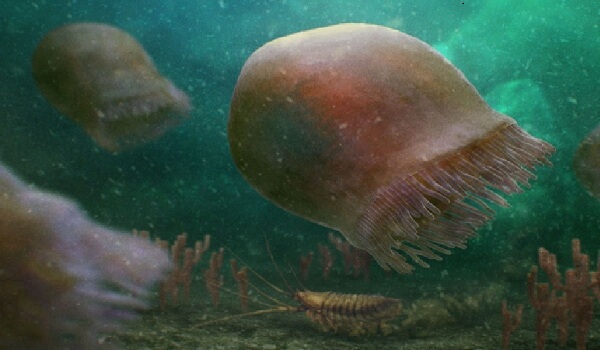Oldest species of jellyfish discovered in the Canadian Rockies. Ancient evidence of swimming jellyfish has been discovered in the Canadian Rockies. They lived in the oceans 505 million years ago. Researchers have found 182 jellyfish fossils from the famous Burgess Shale fossil site The Burgess Shale is located in the mountains of Canada’s Yoho National Park in the British Columbia province. The fossils belong to a previously unknown species of jellyfish, called Burgessomedusa phasiformis. The discovery suggests that these creatures evolved millions of years ago. Five hundred million years ago the shallow seas in British Columbia were teeming with creatures different from those living today. But there is one jellyfish that is very similar to the jellyfish swimming in today’s oceans. Scientists say Canada Fossils found in the Burgess Shale are the oldest known creatures we recognize as jellyfish.
Canadian Rockies Jellyfish
- Their body is soft and 95% is made of water.
- Jellyfish are about 8 inches (20 cm) in length.
- The bell-shaped jellyfish evolved more than 500 million years ago.
- These jellyfish are Medusozoan and are umbrella shaped animals.
- Medusozoan coral and sea anemones belong to a larger group called Cnidaria, which is one of the oldest groups of animals to exist on Earth.
- Medusozoans include modern box jellies, hydroids, stalked jellyfish, etc.
- Studies of the fossil revealed that the jellyfish was a polyp, which lived in the Ediacaran period, before the Cambrian period, 557 million to 562 million years ago.
Jelly fish
- It is one of the most venomous sea creatures, its name coming from the jelly-like mesoglea material.
- They do not have spines, are smooth jelly-like, and are armed with tiny stinging cells.
- These Jellyfish come in many different shapes, sizes and colors.
- They have limited control over locomotion, and can move using hydrostatic anatomy through contraction vibrations of their bell-shaped bodies.
- They do not need a respiratory system because their skin is so thin that they absorb oxygen from the water through it.

